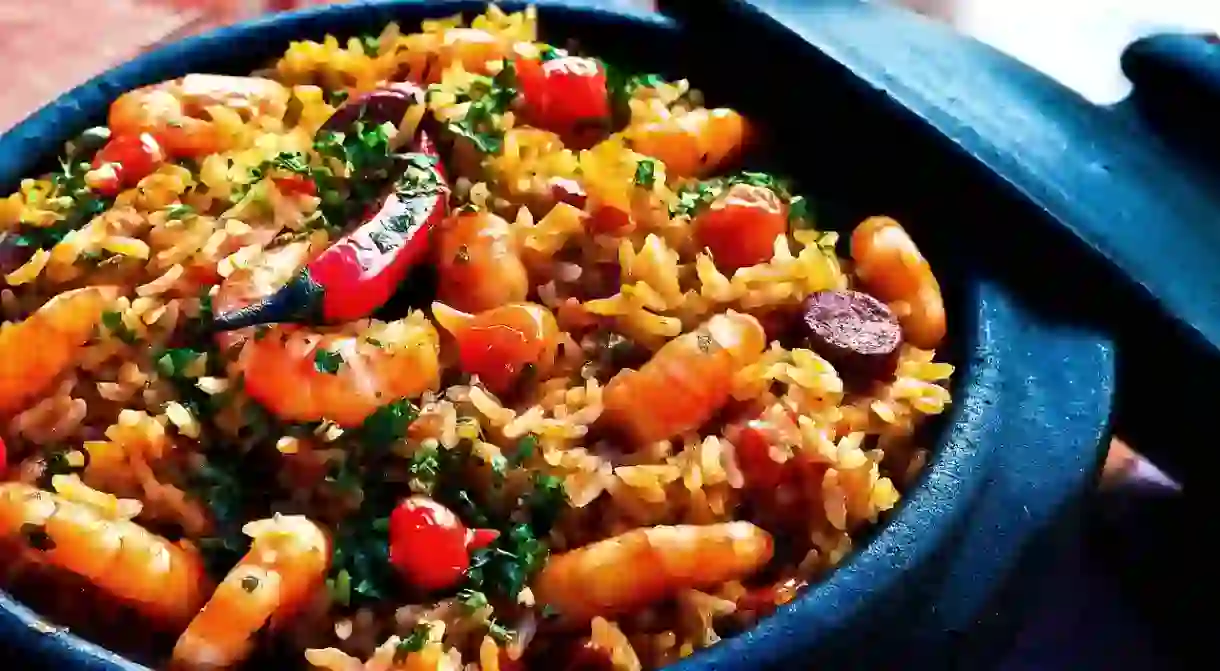Menu of the Day: Food from Bahia in Brazil

Salvador in Bahia was declared Brazil’s capital city by Portuguese colonizers in 1549 and it remained this way for the next 200 years. Despite its European roots, what really influenced the region’s cuisine was the enslaved Africans who restyled Portuguese dishes with their own cooking methods and a mix of African spices and herbs.
Did you know – Culture Trip now does bookable, small-group trips? Pick from authentic, immersive Epic Trips, compact and action-packed Mini Trips and sparkling, expansive Sailing Trips.
Cocktail Hour
Caipirinha

For a traditional cocktail in Brazil, there’s no other like a classic caipirinha. The caipirinha is made with cachaça (a spirit made from native sugarcane) mixed with lime juice, sugar, and ice cubes. It’s a simple cocktail to make and nowadays, many bars make caipirinhas with other fruits. However, the Caipirinha Law (a law that actually exists in Brazil) states that a cocktail can only be declared a caipirinha if it’s made with lime.
Appetizers
Acarajé

The best-known street food in Bahia, acarajé is mashed black-eyed peas rolled into a ball and deep-fried in dendê oil. Once cooked, the acarajé is split open and topped with vatapá (a paste made with prawns, cashew nuts, peanuts, dendê oil, and coconut milk), whole, peeled prawns, hot chili sauce, caruru (a condiment made with okra and peanuts), and finely chopped tomatoes.
Tapioca

Tapioca is cassava flour fried without oil or butter to create a gluten-free pancake. It’s common in Bahia to top the tapioca pancake with prawns and fried garlic or cheese with chopped ham. It can also be made into a sweet version with bananas and condensed milk.
The Soup Course
Caldo de Feijão
More than just a soup of black beans, caldo de feijão is mixed with several other ingredients, such as bacon, onions, garlic, parsley, and chili pepper to give it a rich taste. It’s eaten in a small bowl that’s just a little bigger than a shot glass.
On the Side
Feijão

Feijão is the Portuguese word for ‘beans’ and is the staple food across Brazil. Each state has its own preference and in Bahia, the most commonly used one is the Carioca bean, a type of brown bean that is popular in Brazil. Carioca beans are often cooked with extra ingredients, such as garlic and finely chopped bacon, for extra flavor.
Farofa

No meal in Brazil is complete without farofa—fried cassava flour sometimes cooked with chopped bacon, brown beans, or even scrambled eggs. It helps soak up the juice from the beans and also adds a crunchy texture to the soft rice.
Rice
Last but not least in the trio of traditional Brazilian foods is rice, which is served with farofa and beans. The rice is cooked by first frying chopped garlic in plenty of olive oil, then adding the rice to soak up the oil and the flavor of the garlic before adding hot water with plenty of salt and leaving it to boil.
Efó
Efó is a typical dish from Bahia and is used in the candomblé religion as an offering to the spirits. It’s made with dried meat, malagueta pepper, garlic, onions, coriander, and green leaves (can be mustard leaves or spinach though regional plants are often what’s used).
Abará
bará is similar to acarajé, and the main difference is in the way it’s cooked—abará is steamed inside banana leaves whereas acarajé is deep-fried. Abará is typically found in Africa and Bahia, and also makes up an important part of the food rituals associated with candomblé.
Acaçá
Acaçá is made from a red or white corn-based paste that is wrapped in banana leaves before cooking. A dish commonly found in certain parts of Africa, it is a regular item on menus in Bahia and plays a central part in candomblé rituals.
Main Plates
Moqueca

One of Bahia’s most famous dishes is the moqueca. It’s made by sautéing prawns with coconut milk, dendê oil, hot chili, garlic, onions, parsley, and tomato paste and then served with white rice, often cooked in coconut milk.
Vatapá

Vatapá is another popular Bahian dish and is a spicy prawn paste mixed with dendê oil, peanuts, and coconut milk. It’s usually served with white rice.
Bobó de camarão
One of the most iconic dishes in Bahia, bobó de camarão is almost identical to the Ipete dish found in West Africa. It’s made with prawns mixed in a paste of cassava, dendê oil, and coconut milk and is often served with white rice.
Desserts
Cocadas
Cocadas are made by mixing shredded coconut with eggs and condensed milk before rolling the mixture into small balls. They are sometimes flavored with ginger or lemon and are a common street food in Salvador.
Mungunzá
Found throughout Brazil, mungunzá (as it’s known in Bahia, though other states call it canjica) is commonly served during the Festa Junina, a month-long Catholic celebration that takes place in June across Brazil. It’s made with white maize kernels that are softened by being cooked in milk and sugar, then topping this off with cinnamon and serving it hot.
Pamonha

Commonly found in Bahia and other states in the northeast of Brazil, pamonha is a sweet corn paste that is wrapped and boiled in corn husks. It is sometimes cooked with coconut milk and can be eaten sweet or savory.













